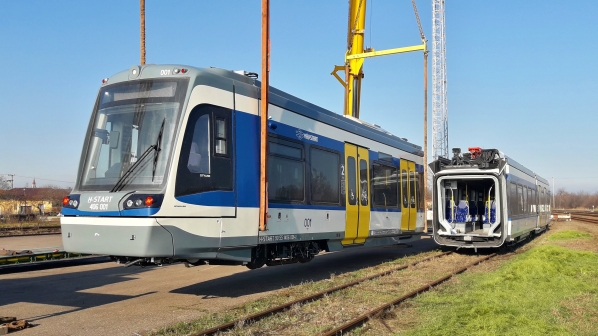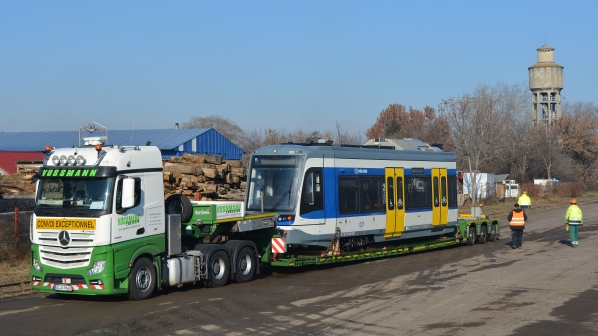The vehicles will be operated by national operator MÁV-Start on the existing light rail network in Szeged and the newly-built Hódmezővásárhely light rail network, as well as along the non-electrified mainline between the two cities. The trains will be based at Szentes depot.
The first train, numbered 406.001, was delivered in three sections using low-loader lorries and unloaded at Szentes railway station using two 60-tonne cranes.

The tram-trains have a top speed of 100km/h on the mainline and 50km/h in urban areas. The vehicles will operate under 600V dc electrification on the light rail networks, and use two 390kW diesel engines on the mainline. The traction motors have a power rating of 4x145kW.
The mostly low-floor vehicles will be accessible from low and medium height platforms and have capacity for 216 passengers including 92 seated. The 37.2m-long vehicles, which have four doors along each side, also feature space for wheelchairs, bicycles and pushchairs, as well as air-conditioning.
MÁV-Start originally awarded Stadler a contract for eight vehicles in 2017, with an option for four more, which was exercised in July 2020. Each tram-train costs €6.395m.
The network in Hódmezővásárhely is single-track with three passing loops for bi-directional operation. The project cost Forint 54bn ($US 182.1m), including rebuilding the line between the two cities.
Services will begin on the 22km line in late September, once testing and approval of the first three tram-trains is completed. The eight vehicles in the original order are expected to be in service by the end of November, with the remaining four entering service in the second half of 2022.
For detailed data on fleet orders from around the world, subscribe to IRJ Pro.

